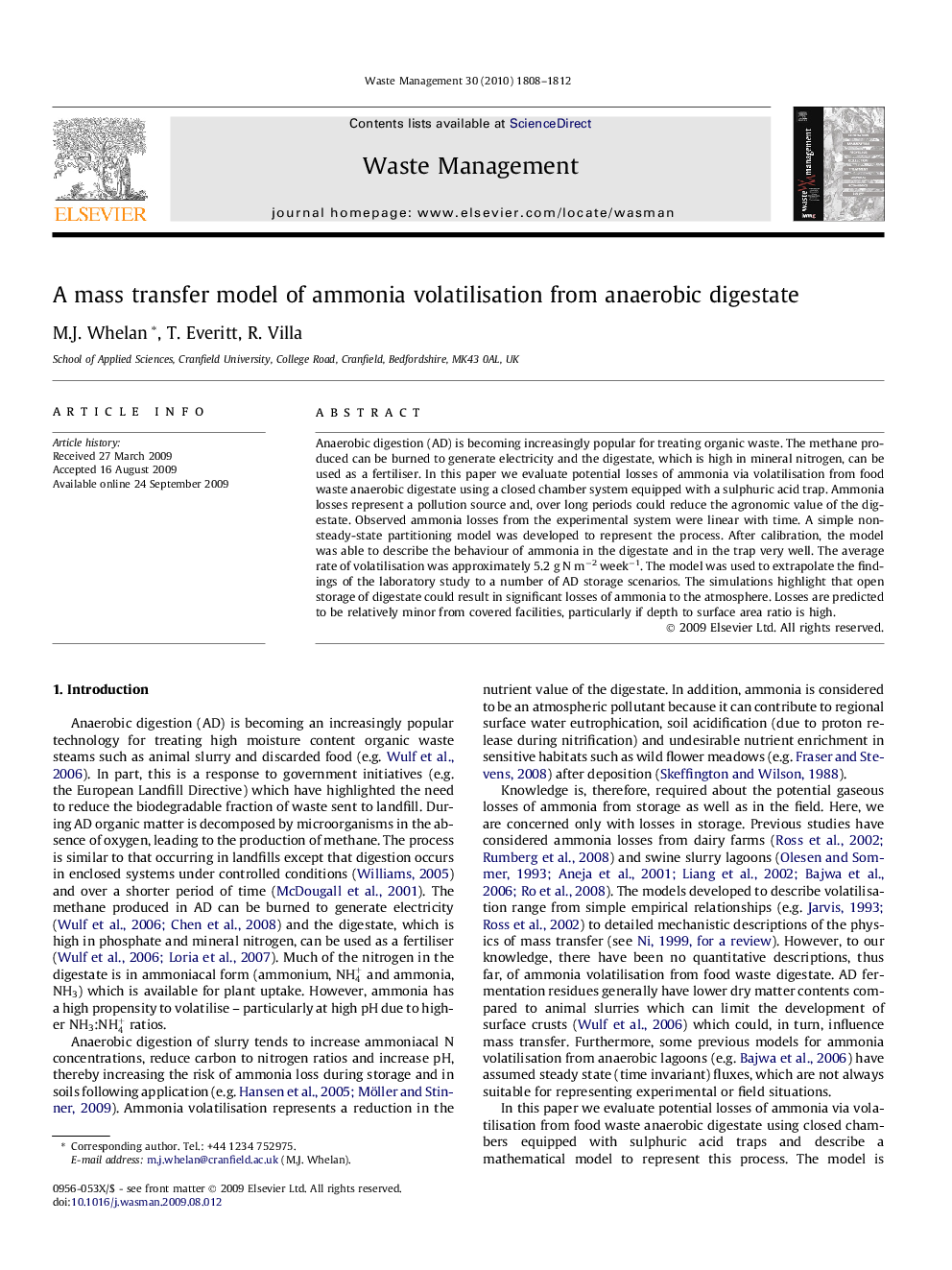| Article ID | Journal | Published Year | Pages | File Type |
|---|---|---|---|---|
| 4472686 | Waste Management | 2010 | 5 Pages |
Anaerobic digestion (AD) is becoming increasingly popular for treating organic waste. The methane produced can be burned to generate electricity and the digestate, which is high in mineral nitrogen, can be used as a fertiliser. In this paper we evaluate potential losses of ammonia via volatilisation from food waste anaerobic digestate using a closed chamber system equipped with a sulphuric acid trap. Ammonia losses represent a pollution source and, over long periods could reduce the agronomic value of the digestate. Observed ammonia losses from the experimental system were linear with time. A simple non-steady-state partitioning model was developed to represent the process. After calibration, the model was able to describe the behaviour of ammonia in the digestate and in the trap very well. The average rate of volatilisation was approximately 5.2 g N m−2 week−1. The model was used to extrapolate the findings of the laboratory study to a number of AD storage scenarios. The simulations highlight that open storage of digestate could result in significant losses of ammonia to the atmosphere. Losses are predicted to be relatively minor from covered facilities, particularly if depth to surface area ratio is high.
